Last February, on the 12th to be precise, life granted me another delightful experience. I received an invitation for a natural hike in the vicinity of Bogotá: Chingaza National Natural Park. It was a full-day adventure that promised a four-hour stroll within the protected confines of this remarkable area.
Our journey commenced at 7 am when the tour company promptly picked me up from home. Guiding us through the day’s exploration were Hugo, our knowledgeable guide, and the amiable William, our skilled driver.
As we embarked on this adventure, my friend Tito joined us, and we were later accompanied by the friendly Emilse, serving as our designated Corpo-Chingaza interpreter-guide. She shared insights about the park and informed us that our chosen path would be the route of Santa Maria de las Lagunas, more commonly known as the Lagunas de Siecha route.
Here, we were promised a glimpse of the captivating flora of the Páramo, including the splendid frailejones.


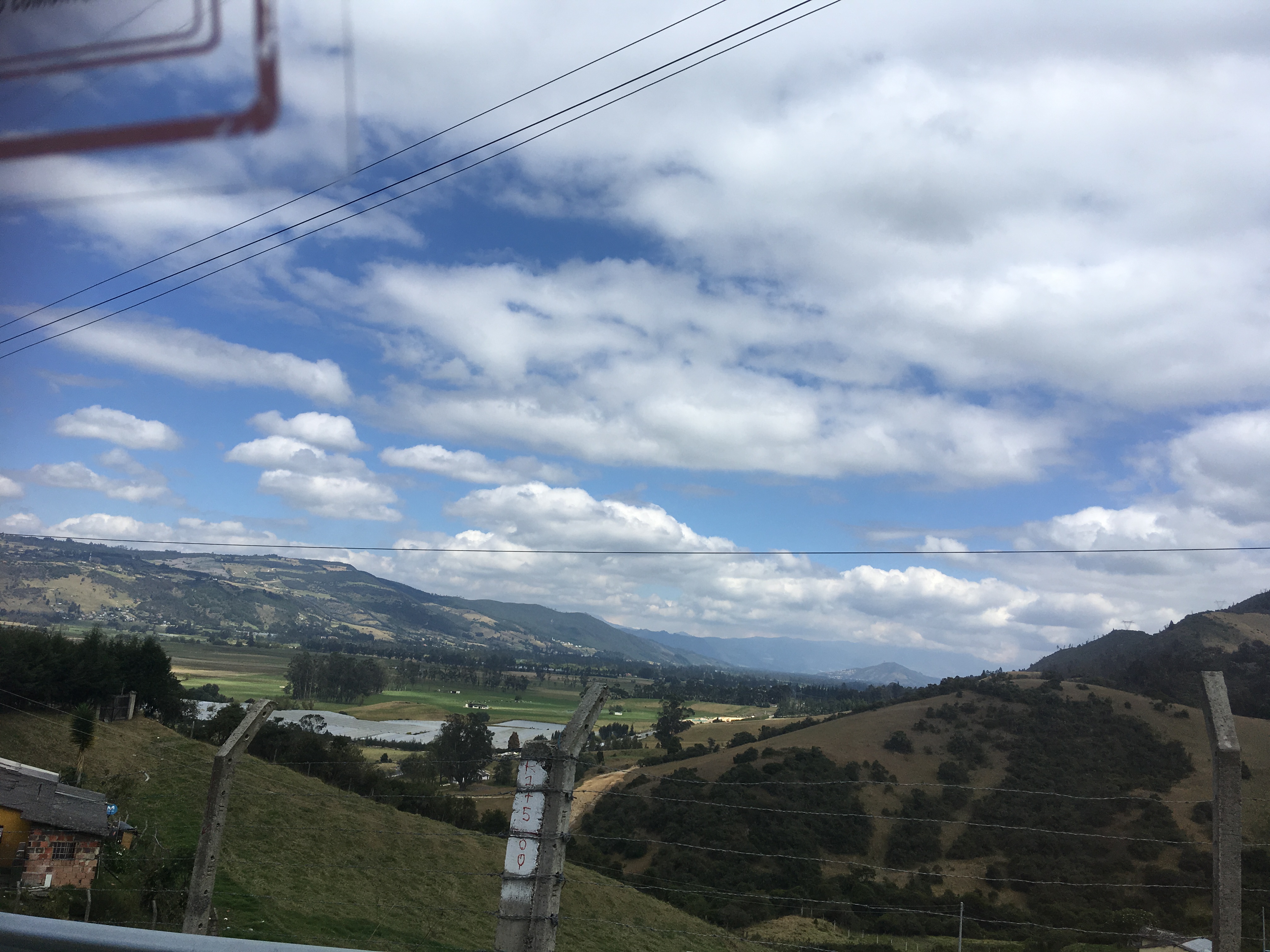
Owing to the dreadful traffic in Bogota, our journey to La Calera stretched to two and a half hours, a stark contrast to the typical 40-minute commute. Hugo enlightened us about an alternative route through Hacienda Marques, navigating the Codito area, which promised a much swifter arrival at La Calera. However, due to security concerns in that region, this route is largely overlooked.
Chingaza National Natural Park: Where Cultural Heritage and Environmental Harmony Converge
Chingaza National Natural Park stands as a cherished native gem, offering a profound connection to the charm and secrets of our ancestral cultures, the Muiscas and the Guayupes, who once thrived in this very territory.
Known as the force of water, the páramo encompasses the Chuza Reservoir, a crucial source of the exceptionally pure water we drink in Bogota.
This protected area not only shelters endangered species but also safeguards vital ecosystems. Today, the park serves as a refuge for the majestic ecosystems of Andean fauna and flora, preserving the natural beauty and cultural heritage of the region.
Around 10 am, we traversed Guasca and the vicinity of the El Ensenillo forest reserve until we encountered the turnoff leading to the park’s entrance. Continuing along the uncovered road, we reached the designated parking spot at approximately 10:50 am.
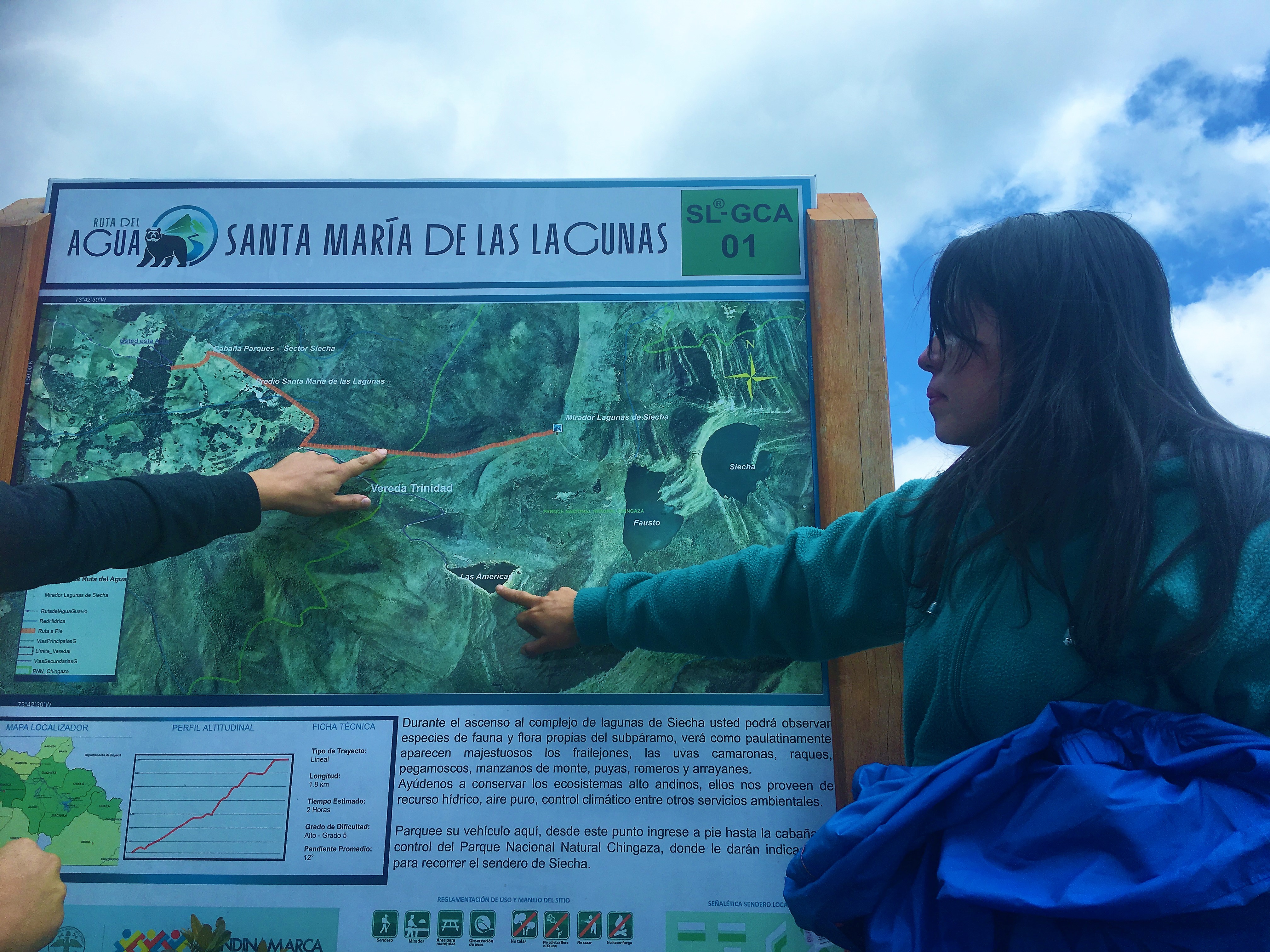


Elevated at 3000 meters above sea level, by 11 am, we stood at the entrance to the park, where we meticulously recorded our arrival time, a process we would repeat upon our departure. Here, we underwent a brief orientation to the park and its regulations, setting the stage for our exploration. Explore the park’s introduction here.
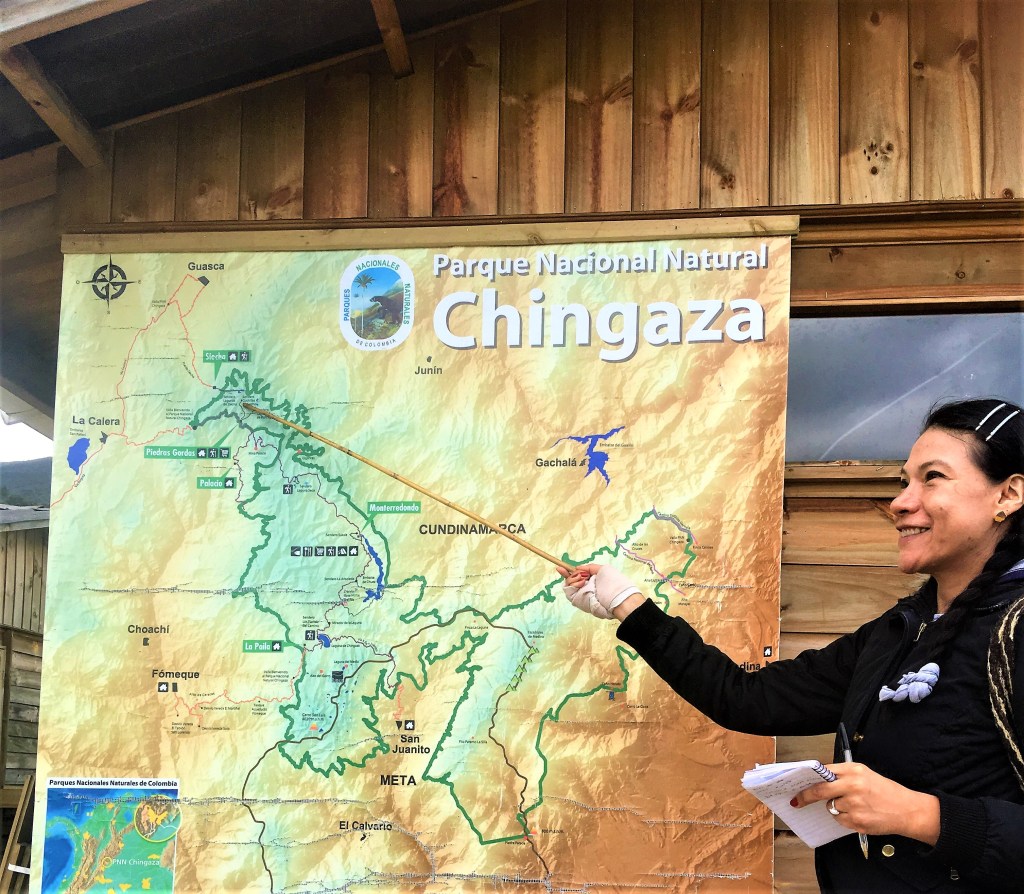
Chingaza Park proudly holds its place among the 60 protected areas comprising Colombia’s national parks system. When viewed from above, the park reveals itself in the shape of a butterfly. Encompassing over 76,000 hectares, this natural sanctuary is situated in the eastern mountain range, northeast of Bogotá.
The park unfolds with two distinctive wings: the western wing, dedicated to ecotourism, invites visitors to explore seven different trails. Our chosen path today, as mentioned earlier, is the Lagunas de Siecha trail, serving as a gateway to Guasca. On the other hand, the eastern wing extends towards Piedemonte and is strictly reserved for research and investigation. Currently, the park is a hub of scientific inquiry, with ongoing studies focused on the endangered monkey churucu.
The park encompasses 11 municipalities, with 7 belonging to Cundinamarca: Fómeque, Choachí, La Calera, Guasca, Junín, Gachalá, and Medina, and 4 municipalities in Meta: San Juanito, El Calvario, Restrepo, and Cumaral.
Four designated access points facilitate entry into the park: Guasca, La Calera (main entrance), Fómeque, and San Juanito.
Emilse shared fascinating insights, revealing that the park is home to approximately 70 Andean bears, also known as the spectacled bear.
Among the diverse fauna are white-tailed deer, soche, curies, cusumbos, rabbits, condors, and various bird species. The prospect of encountering these animals filled me with excitement.
Andean bears are primarily herbivores, with a small percentage (20%) exhibiting scavenging behaviour. According to Emilse, they pose no threat to humans, with males reaching up to 2.20 meters and females measuring about 1.65 meters.
Embarking on our ascent up the mountainside, our goal was to reach the impressive viewpoint perched at an elevation of 3700 meters. This upward journey provided a unique opportunity to immerse ourselves in the vibrant tapestry of the park’s fauna, adorned with breath-taking colours that compelled me to capture the beauty through my lens.









Here’s a glimpse of some of the captivating flora we encountered
- Frailejones (Guardarocio)
- Camorona Grape Quilipi (Donkey Ears)
- Mistletoe – Parasite Paramo Little Star
- Arnica (Purple Flower)
- Yellow Orchid: Emilse mentioned that this trail boasts more than 10 varieties of orchids.
- Tintillo : A plant utilised by the Muiscas for painting different textures.
Each of these botanical wonders added a layer of enchantment to our journey, showcasing the rich biodiversity that thrives within the Chingaza National Natural Park. Each encounter during this climb was a visual feast, showcasing the diverse flora that thrives within the heart of the park.
Also, during our hike, we discovered a fascinating piece of Muisca history: the Muisca princes were referred to as “Guaches,” while the princesses held the title of “Guarichas“. It’s intriguing to note the shift in connotations that these words have taken on in contemporary times, an observation that any rolo (Bogota resident) would likely find amusing.



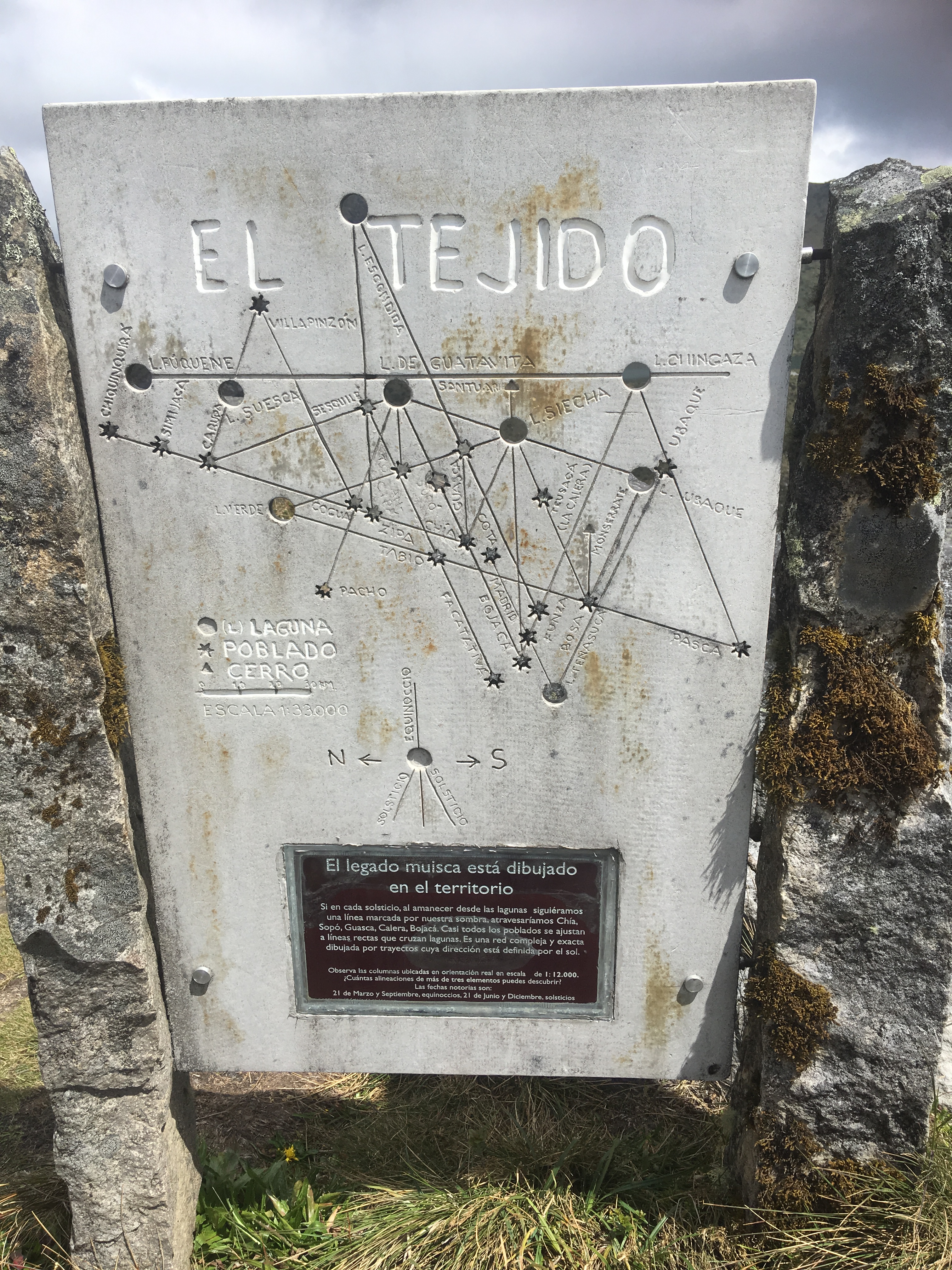
As we approached the viewpoint, a remarkable representation caught our attention: the “Tejido Muisca” showcasing the Muisca’s understanding of solstices. Much like many other cultures in South America, the Muiscas excelled in astronomy, dividing their calendar into four distinct periods. This intricate depiction served as a testament to their great astronomical knowledge.
Continuing our journey, we pressed on until we reached the viewpoint. The ascent, totalling two hours, was rewarded with a breath-taking panorama. From this vantage point, the three lagoons and the renowned “cuchillas del Siecha” (Siecha Blades) came into clear view, earning their nickname due to the sharp, blade-like appearance of these mountains.


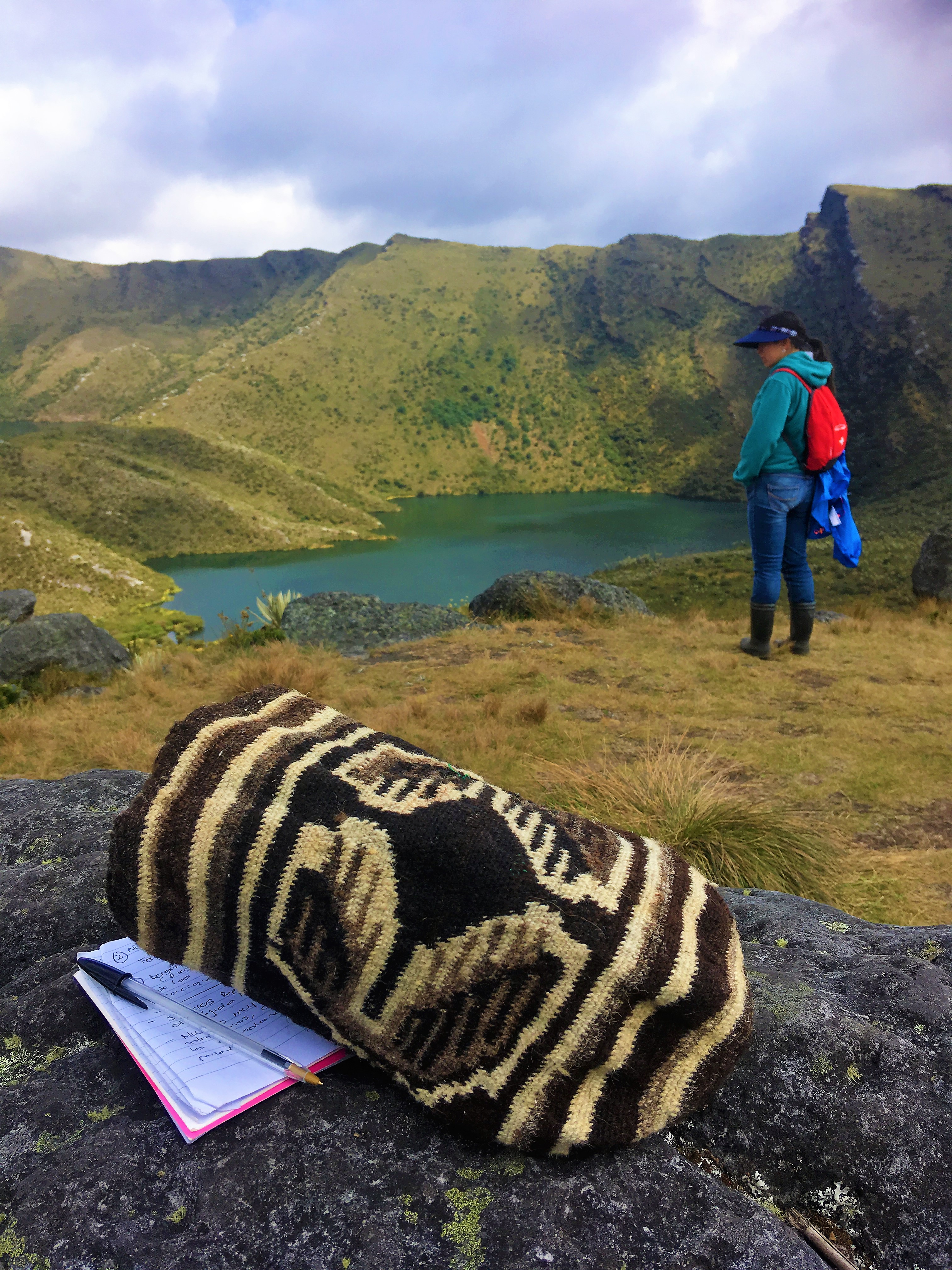
Our guides shared an intriguing piece of local history: the mountains’ backdrop once housed a limestone mine, exploited by the Samper family in years past. Today, abandoned and shrouded in a certain mystique, the site has given rise to peculiar ghost stories that linger in the air.
Mesmerised by the breath-taking landscape, we made the unanimous decision to have our lunch right there, enjoying and appreciating the stunning scenery while also exploring the stories of cultural significance associated with the lagoons
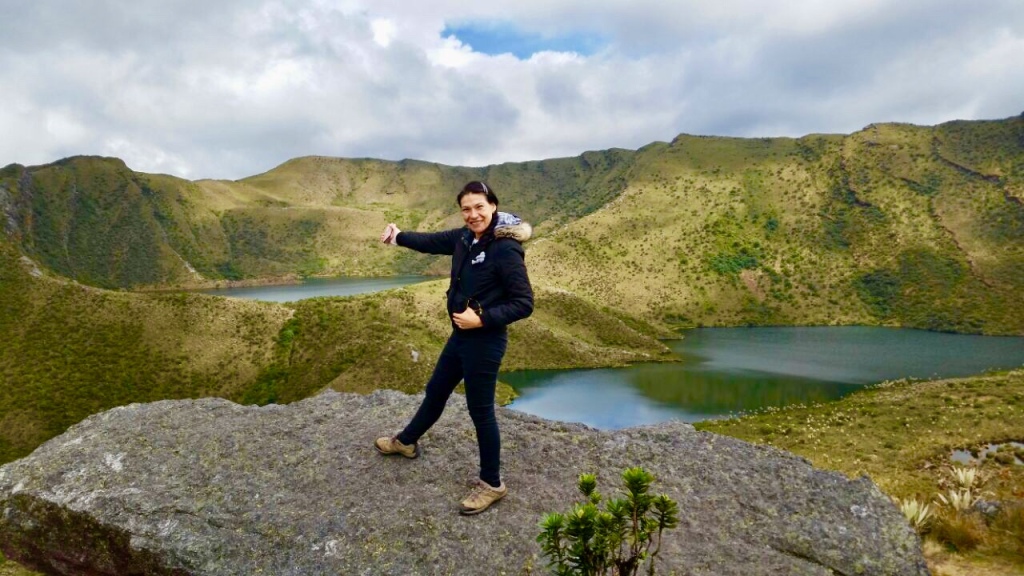
- The first among them named the American Lagoon. As the smallest, it is in the process of silting up, transforming into a wetland. This particular lagoon is also affectionately known as the Children’s Lagoon or Guachaquiti.
2. The second lagoon is known by the name of Fausto, Women’s Lagoon, or Muisca name Tibaitiquica. This lagoon has a small ditch that can be seen from our distance. Emilse told us that this ditch occurred due to an explosion generated by gold prospectors. It is said that there Muiscas a raft of gold, similar to what is in the Gold Museum in Bogota found.
3. And finally, to the third lagoon that is known as the Siecha Lagoon, which means the Male God or the Men Lagoon; it was used by caciques and for special ceremonies. This lagoon has an important history, since it was part of the ceremony of “the earth to reactivate the world” that the Muiscas celebrated, this lagoon was part of the ceremonial route, where it is said that it hides up to 100 sacks of gold, wealth of our ancestors and that the Indians hid from the arrival of the Spaniards.

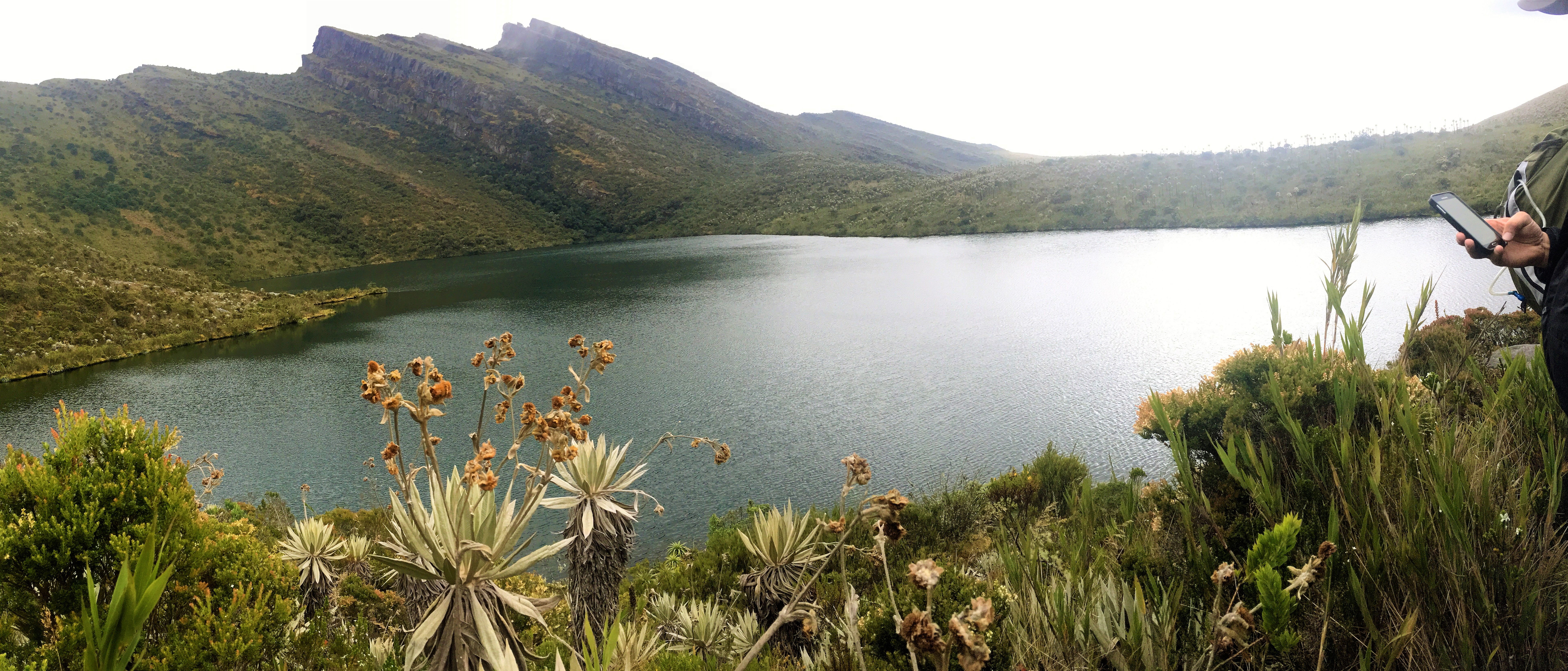

Then we continued getting closer to two of the lagoons, to observe more thoroughly the magnificent frailejones.
After contemplating for a while, we started our return, descending through the lower part of the slope.
During the descent, we had the chance to appreciate more fauna, such as the beautiful purple “lupinus” purple flower, known also as “Guargüero,” and other fabulous views, to finally get back to the registration office at 3:15 pm.
On our way back to Bogota, we stopped for a coffee at a very traditional bakery called “Los Corales,” which I highly now recommend. Here, you can find fresh and delicious handmade bread (I even found bread without egg or gluten!). The group picture was taken, and special thanks to our guides for this beautiful experience.


During the return, we had to wait in Guasca for around 20 minutes due to expansion works on the eastern perimeter road.
Rules and recommendations for visiting the park:
- Only one (1) sector per day can be visited given the distance and weather conditions.
- It is recommended to take plastic boots, sunscreen, and clothes suitable for the cold.
- All trash that is generated should be taken out of the Park (bring garbage bags).
- Do not throw any type of residue on the access roads to the protected area.
- The nearest health posts are in the municipalities of La Calera for Piedras Gordas and Guasca for Siecha.
- Do not get off the trails.
Thank you for reading and learning to appreciate the beauty of our natural world.
With Love from
❤️
Jenny


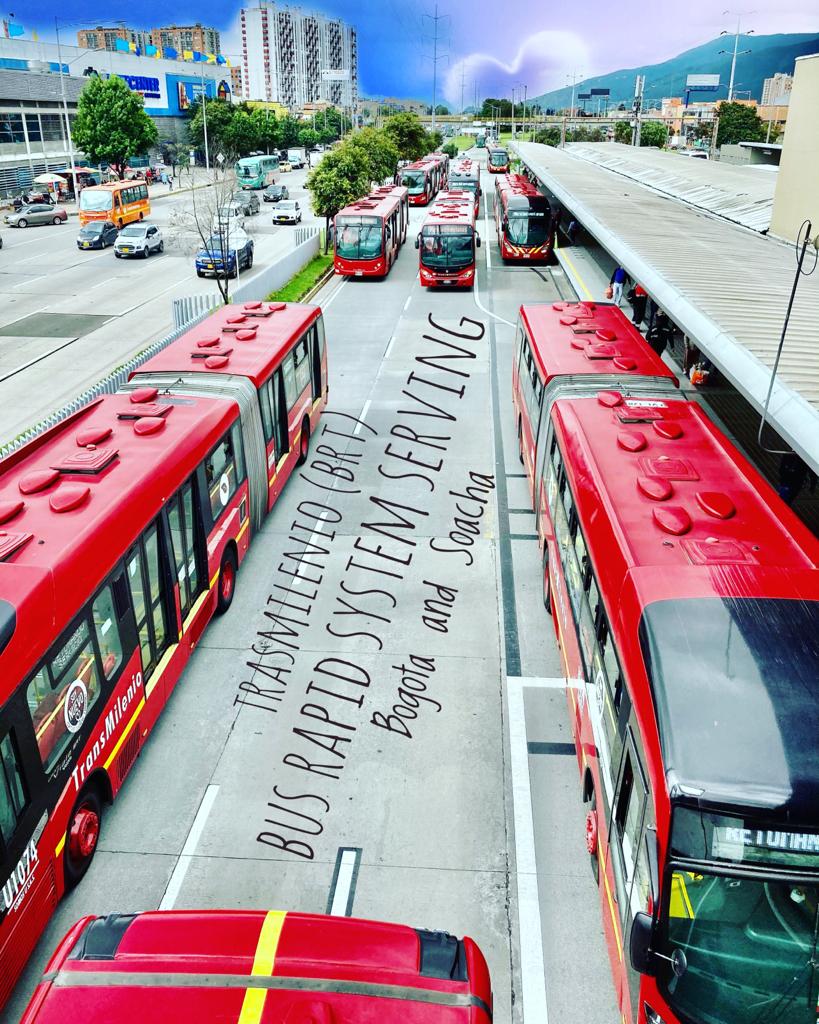
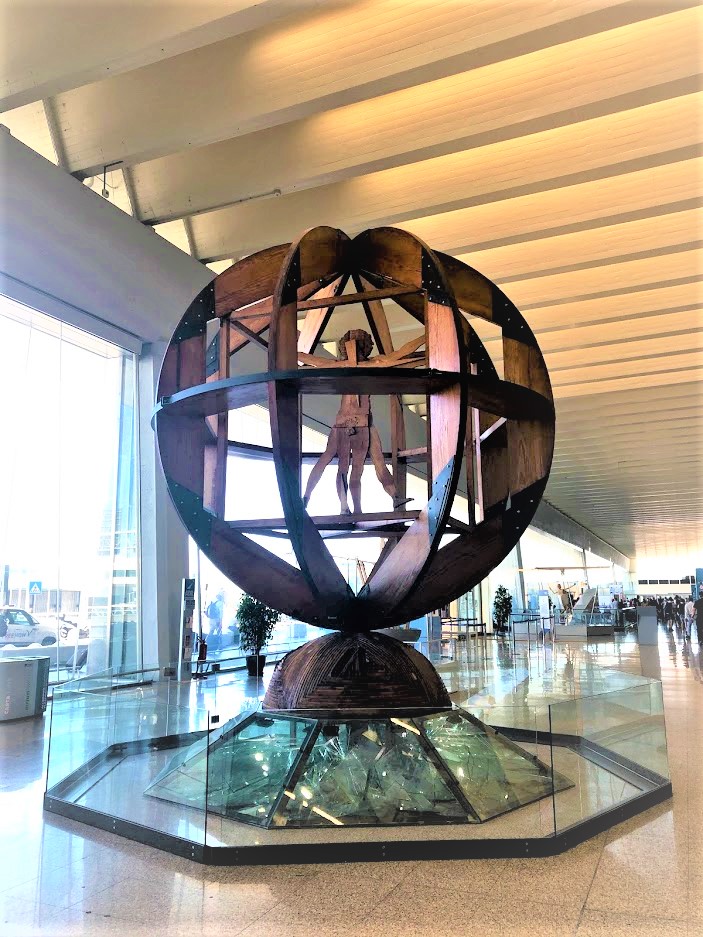
Leave a comment